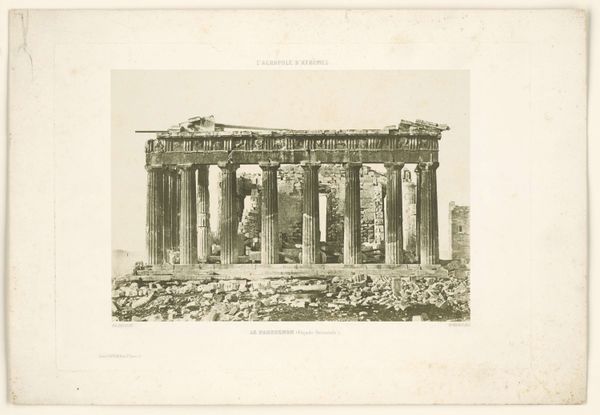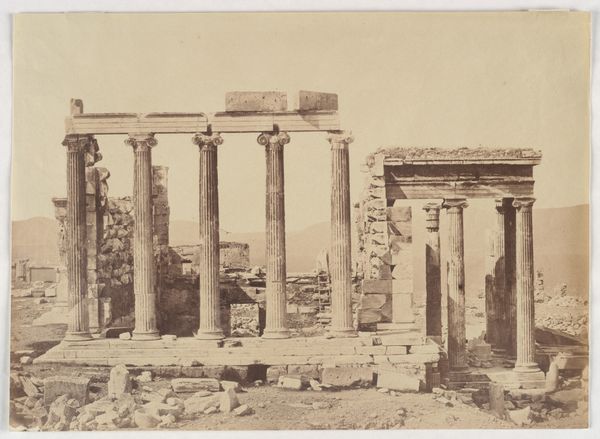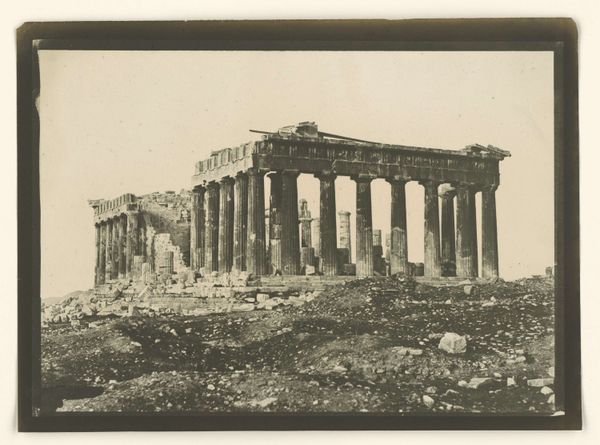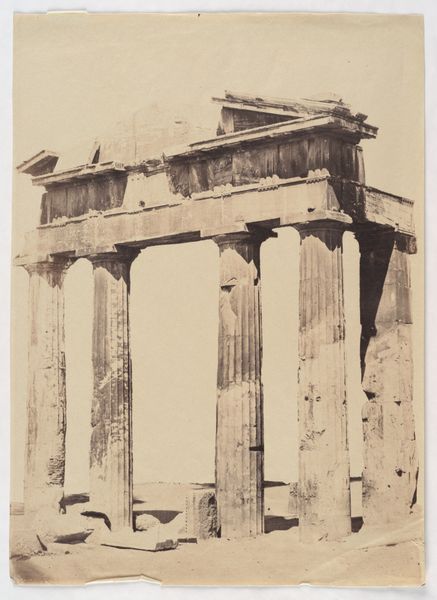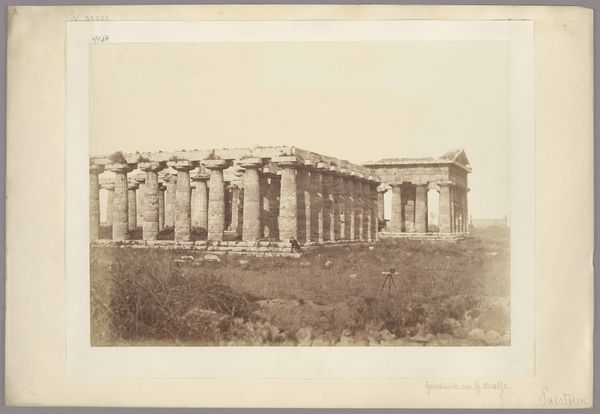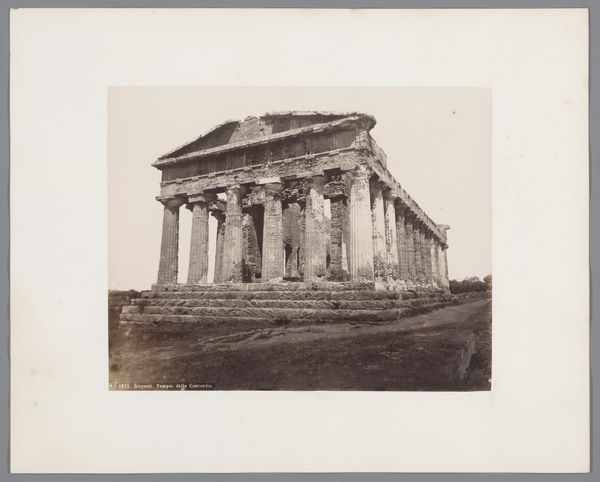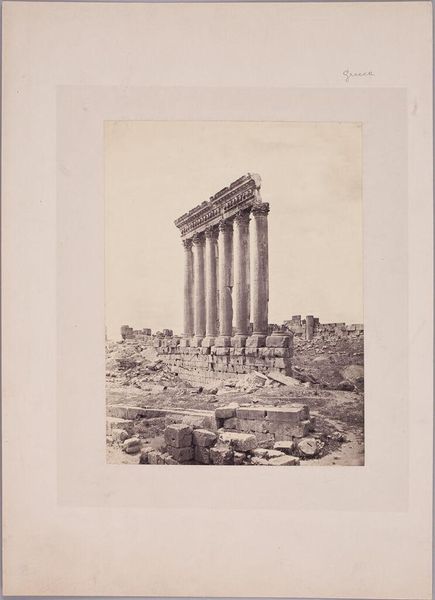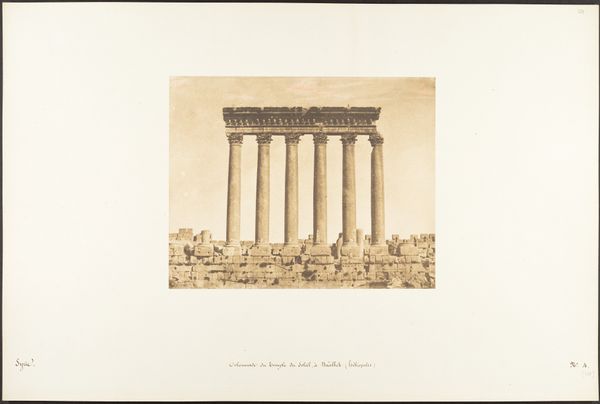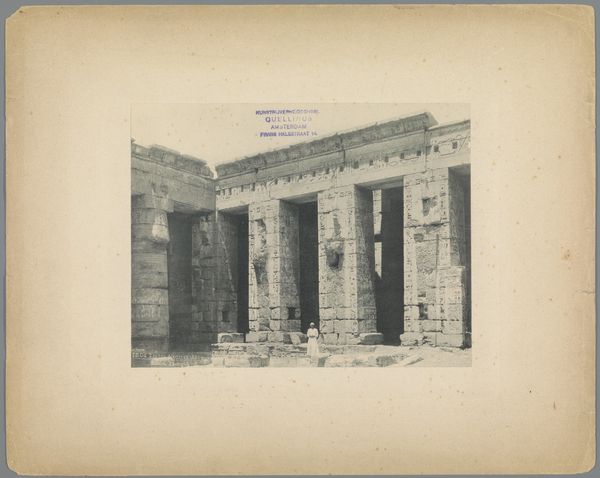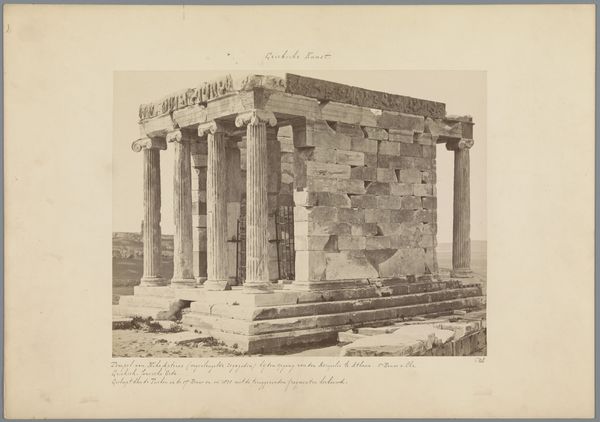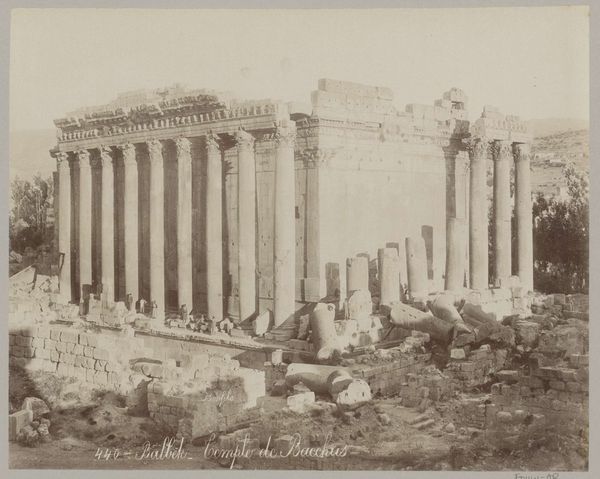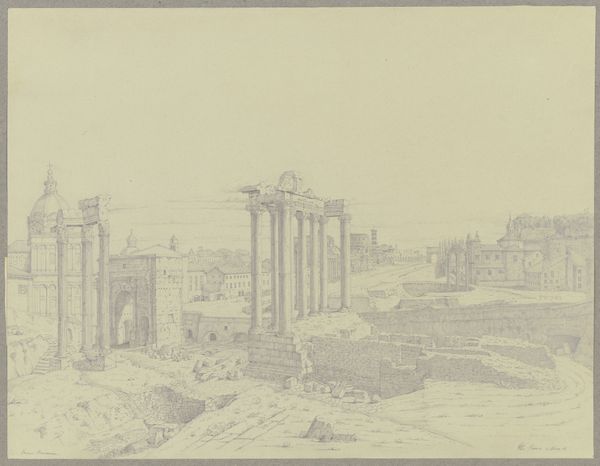
photography, architecture
#
greek-and-roman-art
#
landscape
#
photography
#
architecture
Dimensions: height 317 cm, width 393 cm
Copyright: Rijks Museum: Open Domain
Curator: Let’s examine this albumen print titled "Parthenon op de Akropolis van Athene" by Henri Beck, taken sometime between 1850 and 1860. It’s a landscape view dominated by the architectural monument itself. What's your first impression? Editor: Immediately, I'm struck by a sense of weathered grandeur. Even in this early photograph, the Parthenon, or what's left of it, commands a powerful presence, with the surviving columns creating a repetitive, rhythmic pattern that draws your eye up toward the partially collapsed entablature. Curator: Indeed, and this image offers us a view into the intertwined narratives of classical aesthetics and colonial ambition, a testament of both artistic achievement and historical struggle, resonating even more so as a visual record that falls nearly at the midpoint of Ottoman rule in Greece, a moment defined by resistance, burgeoning nation-state identity, and its impact on the reshaping of Western values. Editor: I notice that the column fluting and the details around the capitals are quite clear, considering the photographic techniques available at the time. What significance might these classical features have held for a 19th-century audience? Did they represent anything specific to contemporary society? Curator: Well, Greek art and architecture served as ideological building blocks, and, for the colonial powers that sought to justify their own authority by associating themselves with this classical past, this would provide a sort of foundation, framing these monuments as cultural inheritance and, inevitably, an expression of imperial control. Editor: I see what you mean, and to dig deeper on that symbolic meaning of the Parthenon’s details, its Doric order for example represents a sense of purity, simplicity, and austerity that some equate with civic virtue and democratic ideals. The columns’ gradual tapering suggests upward motion, while the entasis prevents them from appearing weak or overly linear—these details lend to the monument's overall strength and organic quality, which may further resonate with the ideas surrounding its rediscovery. Curator: Precisely. It shows how a single image encapsulates so many complex layers of cultural significance and historical interpretation, especially when considering this new medium in art history. Editor: Absolutely, there's a captivating blend of enduring symbolic weight and shifting contextual meaning here. Curator: Well, thank you for pointing that out. I think this lens helps reveal that intersection, where aesthetics, politics, and cultural memory converge to define the monument.
Comments
No comments
Be the first to comment and join the conversation on the ultimate creative platform.
